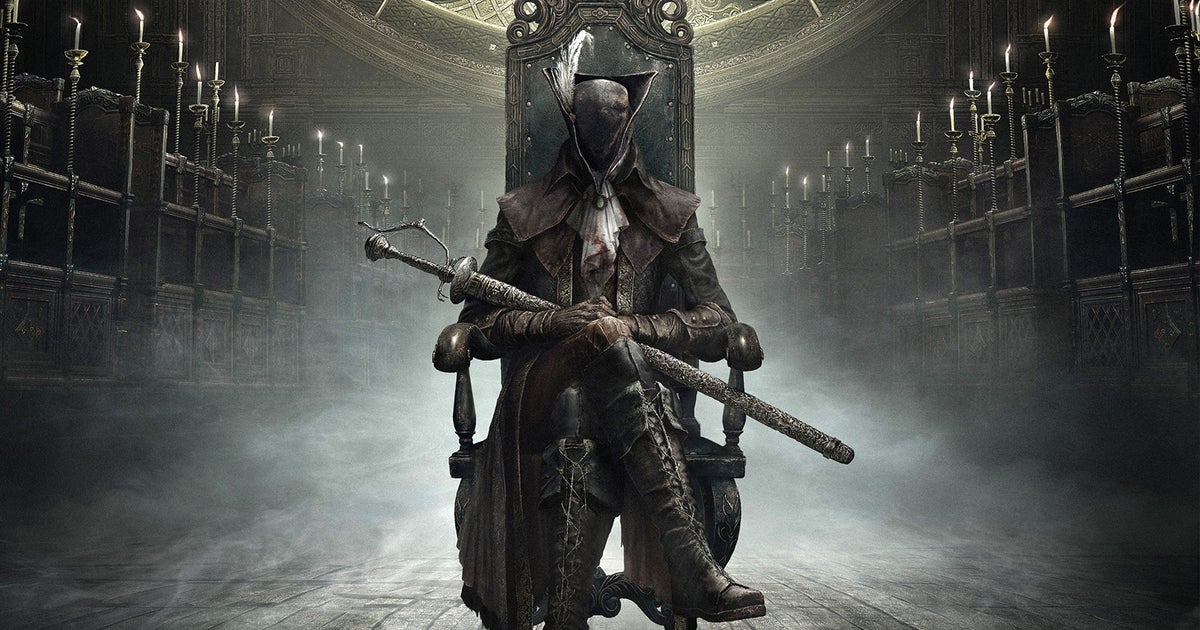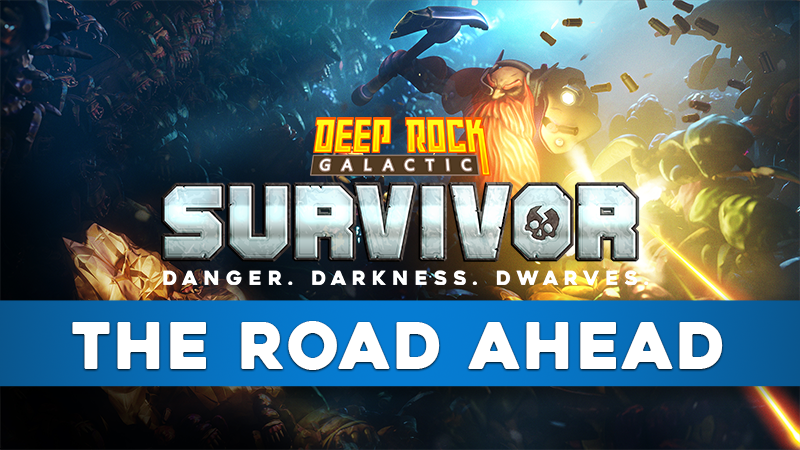steam page is already there.
Nice.
steam page is already there.
I'm aware of Dimps working on FB, I was not really sure who made the last 2 SAO games. I said mixed bag because they also worked on Dragon Ball Breakers and that was sort of liked but also didn't do very well it would seem. I'd consider that mixed.This new game is being developed by DIMPS, same studio as Fatal Bullet, unlike the last 2 releases which were developed by Aquria.
I'd love to be able to buy The Darkness and Uncharted 1,2 and 3.2024 is so far proving to be a good year for "Games where only the sequel made it to Steam". Just this month we got Dragon Quest Builders 1 and announcements for Monster Hunter Stories 1 and Epic Mickey 1. Is this the year we finally get RE Code Veronica? Dragon Quest 1 through 9?!
really bizarre to see this in 2024. how long has this been in development? Could this be one of the last remaining EGS exclusivity deals signed in 2019 or whenever?

I really love how Nintendo directs have pretty much become a PC direct as well.
The official site for the game has Valve/Steam copyright notices down at the bottom so I'd think it's coming for Steam as well and they're waiting for NISA to announce it or some shit.So far only confirmed for Switch and PS4/PS5. No PC version of this was announced.

I'd love to be able to buy The Darkness and Uncharted 1,2 and 3.
or maybe it's first run
Probably means nothing, I just liked Bloodborne's existence being acknowledged for once lol.

.png?width=1200&height=630&fit=crop&enable=upscale&auto=webp)
.png?width=1200&height=630&fit=crop&enable=upscale&auto=webp)
 )
)AlsoBurying the lede here:

I'm not sure what the strategy is, here.Don't see your favorite platform listed? Don't worry. Throw your other platforms in the trash, and get it from one of the above!
Sony's master plan to have a game that finally will implode PS4 shitty fans and have people buy a PS5It's pretty impressive PS4 will still get content like Elden Ring Shadow of the Erdtree DLC.
In the past that gen would have only got the yearly FIFA teams update without graphics improvements.
Assuming the DLC is quite large and of comparable quality to the base game, which are both relatively safe guesses, I'm not sure what difference it makes in practice whether it is labelled a "DLC" or a "brand spanking new game". It's not as though the gameplay and engine are flawed and need rethinking.Still I can't be the only one rather cold for a 40€ dlc for a game released more than 2 years ago, at this point they should've just work on a sequel.
I loved ER but honestly something felt off in what they've shown in that trailer and I can't put my finger on what it is...
Still I can't be the only one rather cold for a 40€ dlc for a game released more than 2 years ago, at this point they should've just work on a sequel.
That chart is leaving out the big reason why the lines are relatively stagnant- xbox's continued incompetence and decline. They declined by around 30m consoles last gen and at the rate they're going with series s/x they're going to end up around 10m short of the xb1...somehow. Look at the peak years on that graph it's right in the middle of the 360/ps3/wii gen where all 3 were doing really well at that point. Also it's a hardware spending chart so those years are likely including the DS and PSP too.
Sony and Nintendo have been in a long period of unprecedented success for themselves despite everything being said recently. Yeah ps4 or 5 may not reach the sheer unit sales of ps2 but you have to remember the last 30m or so of that system was practically handed out to people at $99 lol. Sony's about to set an all time record for console sales in a year, some of the hubbub is only because they're going to miss their insane goal they set and that's their own damn fault for setting the bar so high to begin with. Their main issue is getting their AAA budgets under control which is something every company is facing even multiplat 3rd parties that are on every system under the sun.
edit: I'm not trying to say everything is 100% rosy in the dedicated gaming space but I think a lot of the recent doom and gloom is severely overstated and not understanding all of the details of the data being presented. Also regarding the game budget thing what is the answer if you're not going to reel things in a bit? You can only port to a max of 4 systems, each with set limits on how well it can do (yes even PC). So once that becomes not enough what then, port to mobile? Good luck convincing mobile people to actually buy games. That's something companies have struggled with for a decade.
I don't get this. They spent two years working on something that is (taking them at their word for the scope of it) a game, by any other name.These 2 years could have been spent on ER2 or whatever they wanted to do next and now this sets that next full game back even further.
I don't get this. They spent two years working on something that is (taking them at their word for the scope of it) a game, by any other name.
You have not been set back two years in your wait for your next game. After two years, you get a game.
If the problem you underline is "how long games take [to make]", publishing large DLCs is precisely what you want. Don't waste time and resources trademarking a new name, putting a new coat of paint on menus, and making changes to gameplay for the sake of being "new", reuse and recycle the perfectly good engine and assets you already have, and tell new stories with them.
I don't understand how "more Elden Ring" is in any way a bad thing.
FF7 Rebirth is a game stuffed with tons of new content in only 4 years
Because a new game can have more than just the same exact game again. An expansion largely can't.
Well now not let's get ahead of ourselves when the game is not even out yet.
If you like the base game though, more is always welcome.
If they announced 10 DLCs/expansions for Dark Souls I'd buy them all.
I'm not sure what the strategy is, here.
Does deliberately pissing people off help drive sales?
Me neither, but that's because Elden Ring is a far better game than FF7RI mean I loved FF7R but I would not have wanted a ~20 hour expansion of it two years after it came out

This is true. Especially when there is a quite similar sequel to a popular indie game it is not unlikely for it to perform below expectations.Reminds me a lot of early egsclusivity adopters like the ooblets people, yeah.
And i think they might be overestimate their brand — like other indie devs before them who went egsclusive. Just because your indie game sold well 10+ years ago (usually on Steam) doesnt mean the same is gonna happen with Part II ... I've said this before, but indie hits in 2008 or whatever had a way, WAY lower bar than any random indie game today.

Burying the lede here:

Also
I'm not sure what the strategy is, here.
Does deliberately pissing people off help drive sales?
Sure, but... what specific limitation is ER stuck with here?knowing full well that the game would still be stuck with all of the limitations 7R had.
Balatro is really good!
Yeah, I'm having severe déjà-vu... I could swear I made a similar comment (whether in the privacy of my skull or as a post on these boards I do not remember) about another indie game whose... PR people? devs? were just rubbing it in.Reminds me a lot of early egsclusivity adopters like the ooblets people, yeah.
Sure, but... what specific limitation is ER stuck with here?
For me, everything that I dislike about ER (and I dislike quite a number of things, despite having 500+h in it) is tied to matters of the balance of some attacks, the repetitiveness of some area types, and other things that do not require a radically different engine or gameplay mechanics to fix, just new content.
Souls became a genre for a reason: the gameplay, which scarcely changed since Demon's Soul, is pretty damn good as it is. Keep the gameplay, change the world in which it takes place, and the magic happens again. It's not a genre that needs to absolutely reinvent itself, mechanically, on a regular schedule, to remain relevant. Like a crocodile, it fits its intended ecological niche to near perfection.
Sekiro is barely in the same genre. A single moveset linear action game vs a game with vast customisation and ability to reorder the challenges. Those games cannot seriously be put on a linear order.a downgrade not only from their last game sekiro
And Shadow of the Erdtree may well be 95% "legacy dungeons" and virtually no open world. I don't know, and whether it is or not is irrelevant to the "new game vs DLC discussion", because within the bounds of it being an ER DLC, it could well go either that or the opposite way. It is not at all intrinsically limited in its ability to address that by being an ER DLC.but also over the previous games due to going open world and stripping out most of the great level design these games are known for.
This.Sekiro is barely in the same genre. A single moveset linear action game vs a game with vast customisation and ability to reorder the challenges. Those games cannot seriously be put on a linear order.
Worked for Ooblets, didn't it? Oh wait no it didn't.Also
I'm not sure what the strategy is, here.
Does deliberately pissing people off help drive sales?
